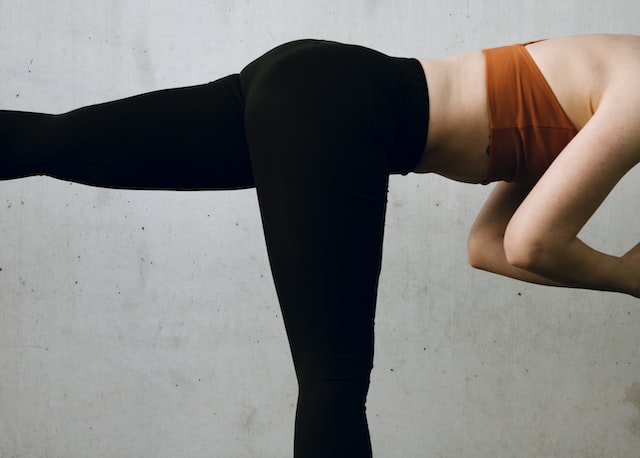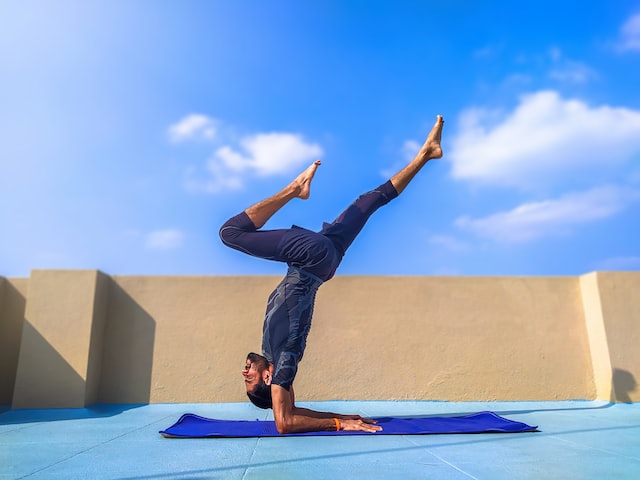Asana’s, the most visible part of yoga. But are you aware of why we are actually performing these asanas? Well, in this article we’re going to have a look at the most famous philosophy of yoga: The Yoga Sutras, written by Patanjali. He said probably one of the most infamous lines explaining what an asana is and why we should perform it: Sthira Sukham Asanam.

Sthira Sukham Asanam
OR
Asana is a steady comfortable posture (translation/interpretation from Sri Swami Satchidananda)
Sthira = Steady or stable
Sukham = Comfortable
Asanam = Posture, Seat or Sitting without Interruption
translating Sthira sukham asanam
The above translation is just one interpretation of course, and if you look online, you’ll find many more. With these series, I hope to be able to explain in a more humane and down-to-earth way how we can look upon these sutras and how to practice them in our daily life or yoga practice.
That said, I’d like to put a tiny disclaimer down too: This article/blog is purely my own interpretation of this sutra. Coming from my own research from other websites, and books, but also from my own experience. Therefore, you might find a different explanation on a different web page or in general literature.
But now, what could Patanjali have meant by saying Srhira Sukha Asanam.
And it must be said that even though we can look at the asana as a physical posture, we can also look at it as a mental one. So instead of merely going into a steady and comfortable seat, we can also look at this asana as a state of being. Hence, why I included it in the translation Sitting without interruption.
The latter we can look at as a bit of meditation, but it’s more than just sitting.
The physical aspect of asana
So, the first part is actually the easiest one to understand. It’s about how to go in, stay and go out of an asana (the postures we are practicing every day in our yoga practice). It’s about what we should experience and feel when we are moving around. And to me, yoga is a reflection of life itself, meaning that in a broader sense, this is what you should/could feel or experience when you are doing your day-to-day things.
To zoom in a little bit on this aspect. Or posture or seat should be steady or stable. Meaning that you won’t feel any strains in your muscles and bones. You know, often we are in an asana thinking: How on earth did I get into this entanglement?! Not being able to really relax in the posture.
To give you an example, I saw a lot of men in my classes have a certain discomfort when it comes down to the Cow face pose (Gomukhasana). Very often men’s legs are a bit more developed as they are often running more often or having jobs where they are standing more on their legs. But when they go into Gomukhasana, they often have difficulties with putting their legs over each other and putting their feet next to their hips. For them, this asana isn’t steady or stable at all, as they are experiencing physical obstruction to get in or even out of the position.

This is just one example of course, but it’s merely to demonstrate that going into a posture like this isn’t steady (or even comfortable!) at all. Further along in the article, we’ll be talking a bit more about how you can put this into your practice.
The mental aspect of asana
This aspect is a little less visible, therefore, we don’t often talk about it when we think of this yoga sutra. It is easy to just leave it on a physical level, but both body and mind walk hand in hand in yoga and even in meditation.
What we try to reach with yoga is that we are trying to find inner steadiness and comfort. Therefore Sthira Sukha Asanam can also be translated into a steady and comfortable state of being. We can always wonder, what was first, the chicken or the egg? In this case what was first, the stable physical position or the stable mental state of being?
But then again, both go hand in hand. But when we are practising yoga we can see a huge correlation between them.
To give another example. When you are relaxed you’ll often be able to go deeper into an asana. This is because our muscles aren’t that tensed when we are in a state of comfort. We see for example in surgeries that whenever someone is under anaesthesia, their body becomes so flexible that they are able to go into certain postures, that wouldn’t be possible if they were conscious. Here we see that even the mind holds us back in certain ways.
tips on how to practice sthira sukham asanam in your yoga practice
#1 Pain is a big no-no
I remember when I first started yoga, there wasn’t that much information about physiology in the asanas. Very often I saw (including myself) people going into positions just because their teacher told them to. I even saw a couple of times the teacher pushing people to go deeper.
Luckily there is more known now on this aspect and teachers are more aware of how to react to certain asanas.
However, you are in control over your own body. So, whenever you are going into a certain posture, please be mindful that an asana SHOULDN’T be painful! There is a difference between mild pain from a stretch and the pain you are feeling because you are straining your body. The latter is a no-go!
If you experience this, make sure you tell your teacher, ask for options, or just get out of the position!

#2 Use props
Throughout the ages we’ve been inventing a lot of aids to help us out, for example, the crotch for people who had a fracture, or the wheelchair for those who were immobilized. And in recent decades there came more and more props for those practising yoga.
What do they all have in common? They all provide us with being more stable and more comfortable. Therefore, whenever they are available, try to use these tools for your practice.
In my classes, I often sit on a bolster, a meditation pillow or even a block to make sure that my hips are raised a bit. This gives me more freedom to put my legs in a steadier position.
#3 Take your time
Rome wasn’t built in one day either, so take your time when going into your asanas. This goes for the physical aspect as well as the mental one. Be patient with yourself and give yourself time to see a difference. These can be so subtle that it isn’t always clear if you are making improvements.
I often experience that one day isn’t like the other. For that reason, start every single day as it is a completely new one. You will see improvement in your practice, but one day you might be stiffer due to cold or rainy weather conditions, the stress in your life, the things you ate (the latter we talk about in our article of Ahimsa), and so on.
Take every yoga class almost as if it were your first one!





